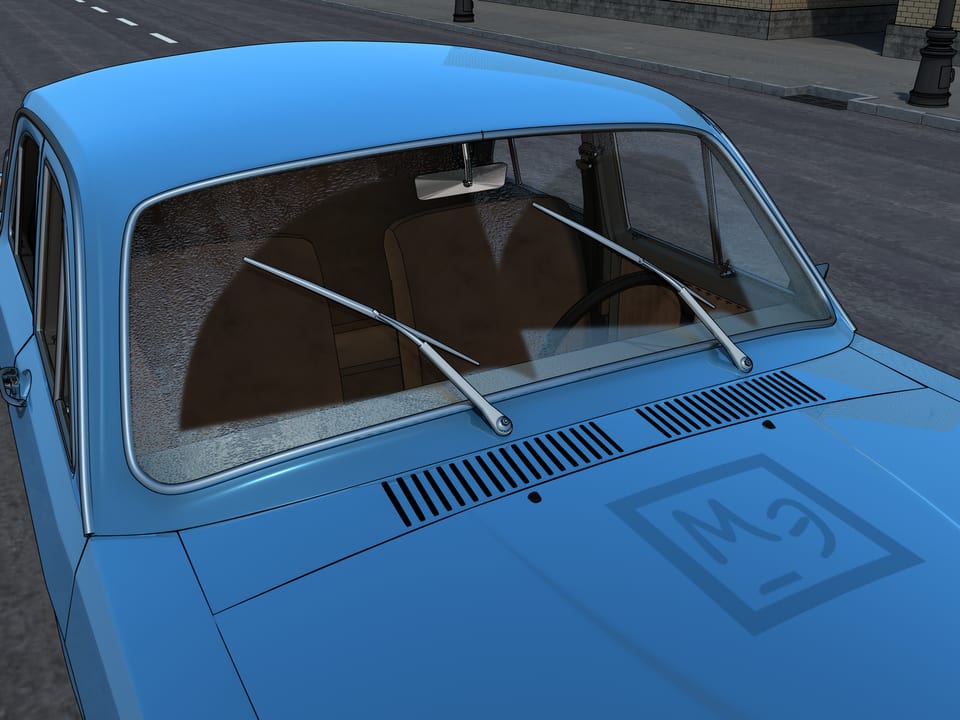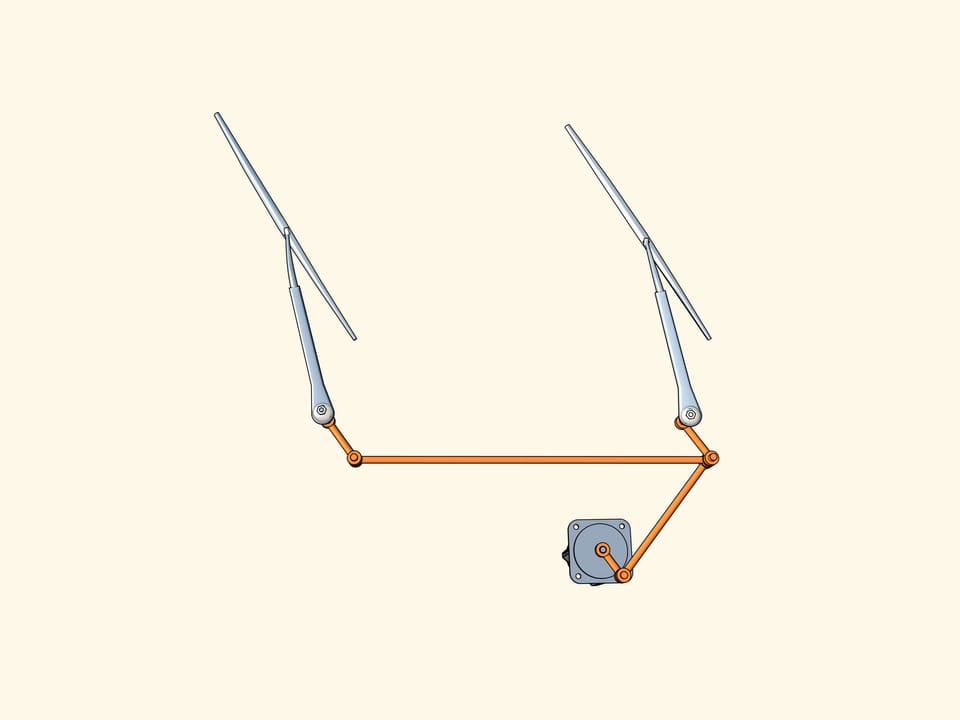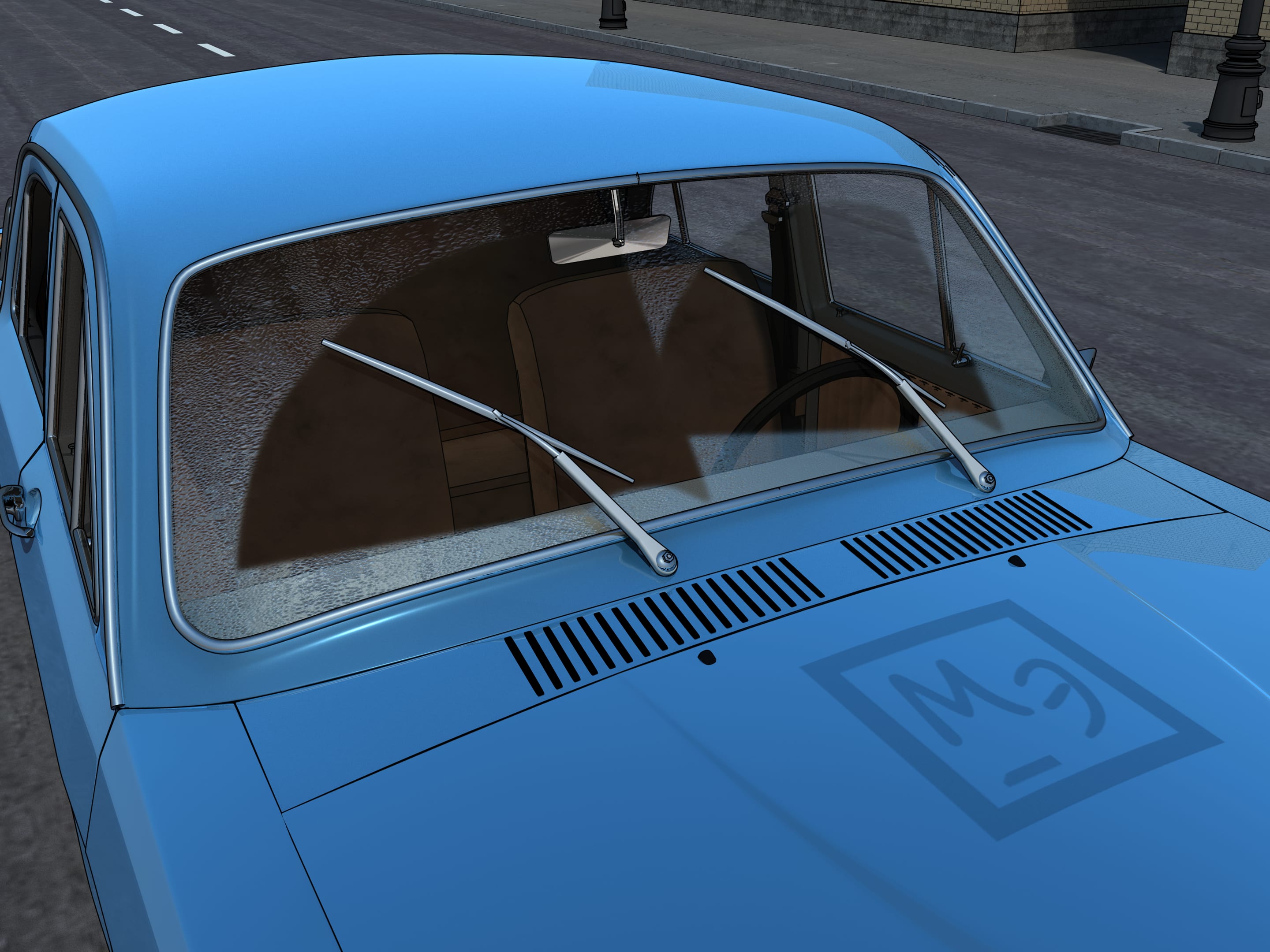Everyone has seen how the car windscreen wipers sweep the water away quickly But did you ever think about how they work? There is only one fixed point, it is attached to the long arm of a lever with a brush that adheres to the glass. If there is an engine that can operate this mechanism, it must turn in one direction, then stop suddenly and turn in the opposite direction. But how it is actually built on the wiper mechanism?
If you open the hood you can see that the wiper motor always rotates in the same way, all the time when it is activated. But it is a planar hinge mechanism, called windscreen trapezoid, that rotates now in one direction, now in the opposite one.
What is a planar hinges mechanism? In short, it is made of bars of different lengths arranged on a plane and connected at their ends by nails. In practice we encounter them everywhere. The research on hinges mechanism in mathematics began at the time of the invention of the steam engine by James Watt and continue in our time. Mathematicians of the twenty-first century proved the “signature theorem”: there is a planar hinges mechanism that forges your signature with any precision.
In the films of the Hinges mechanisms Section we will see some interesting facts of the history of the development of the hinges mechanisms.










